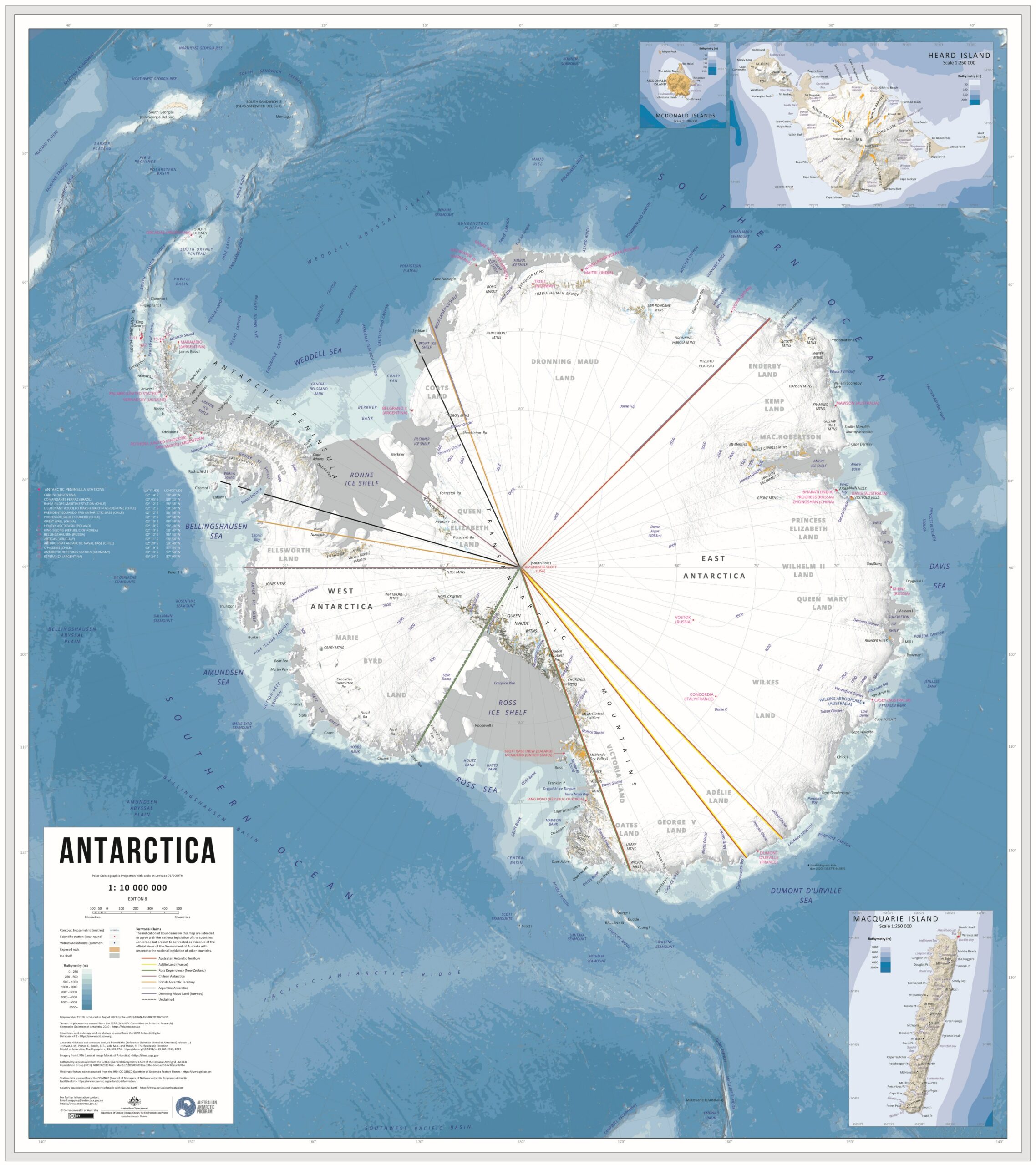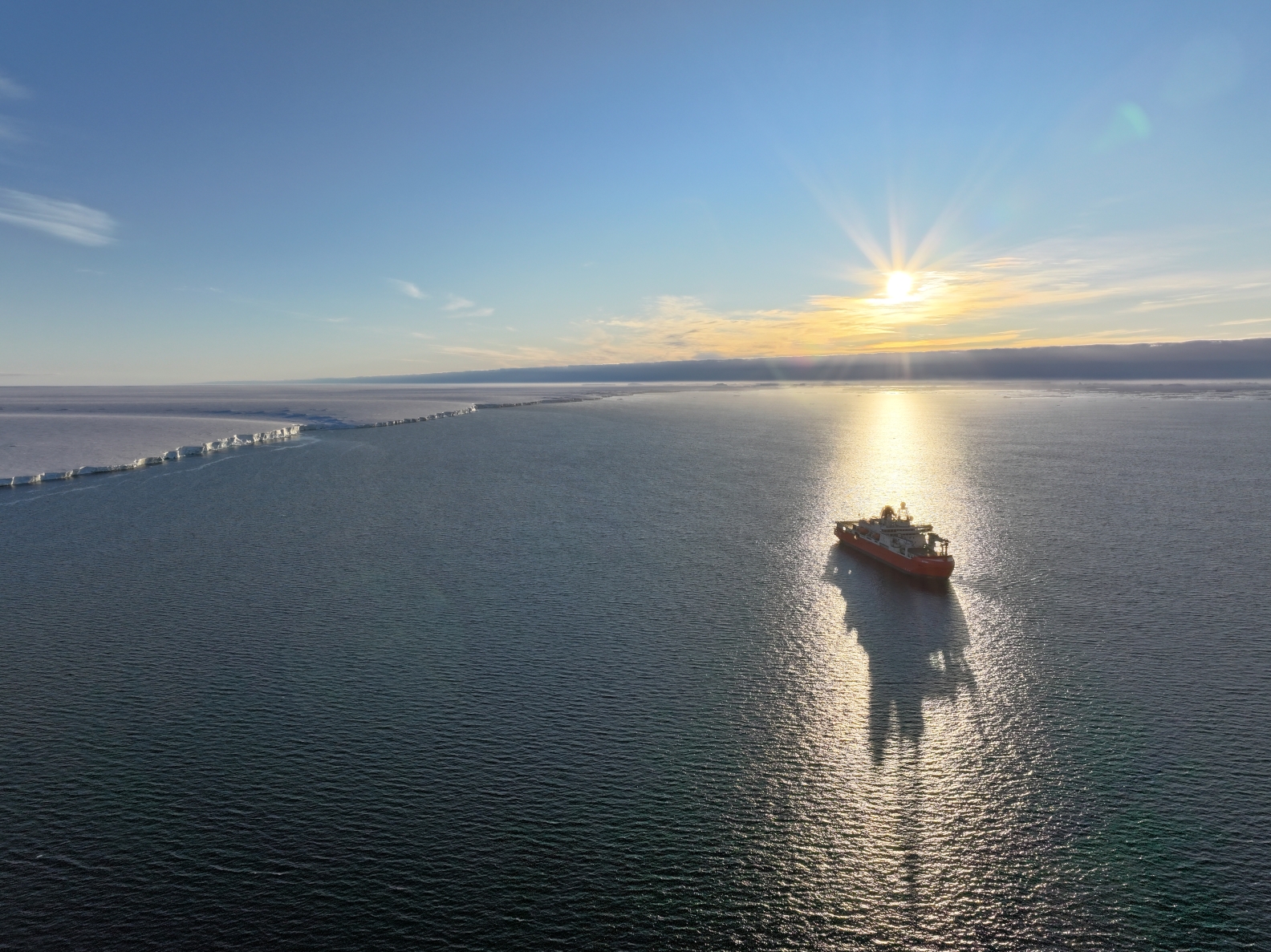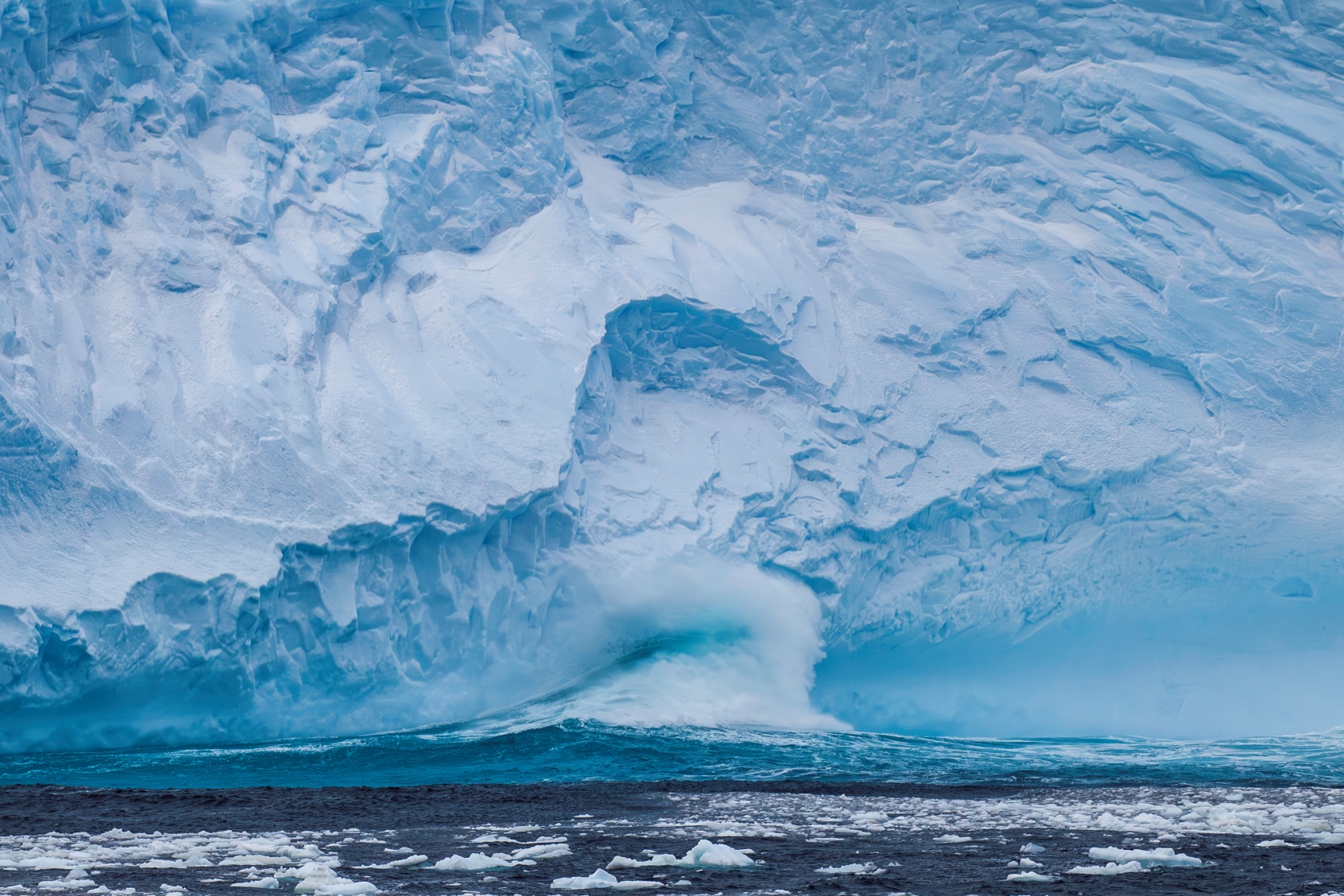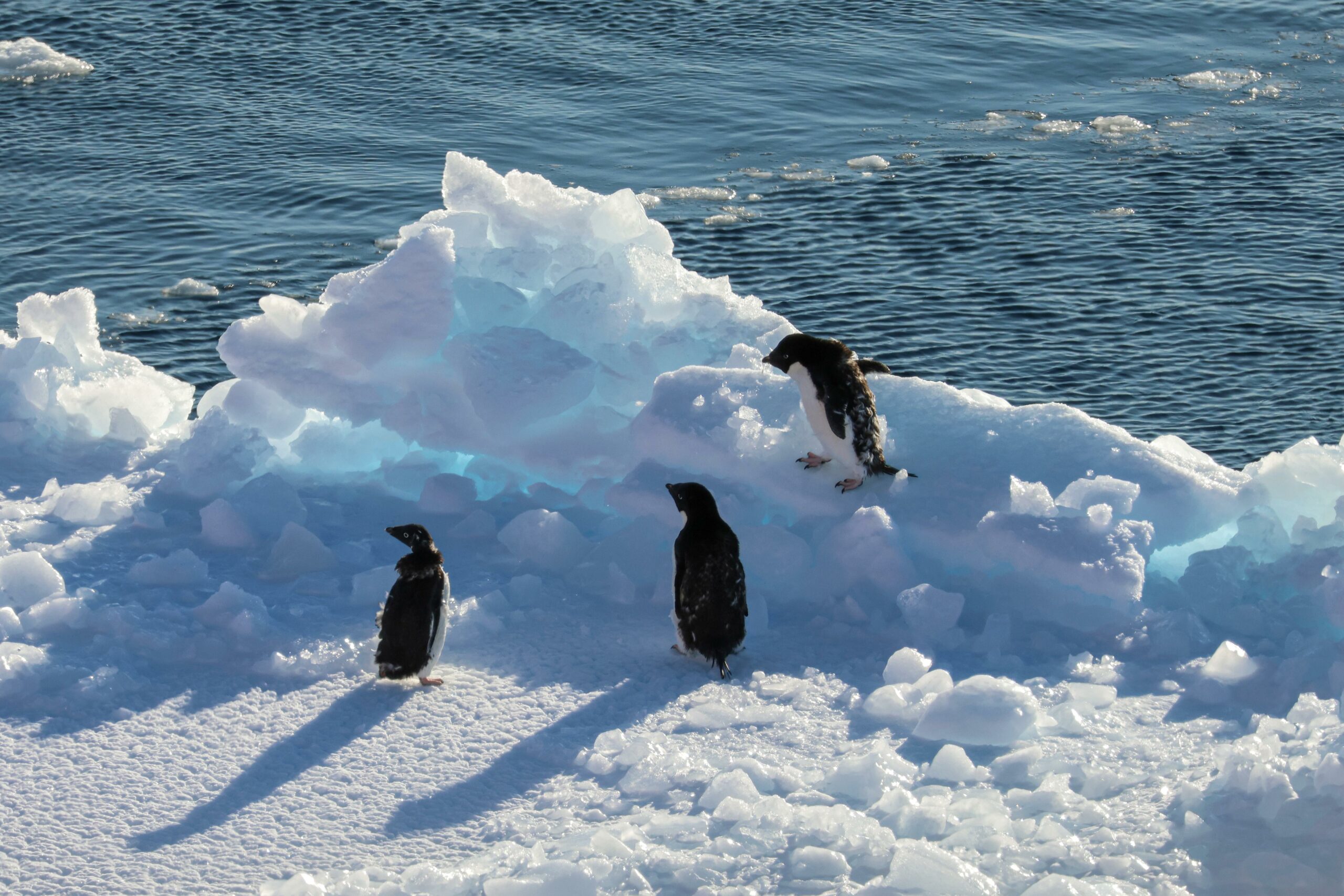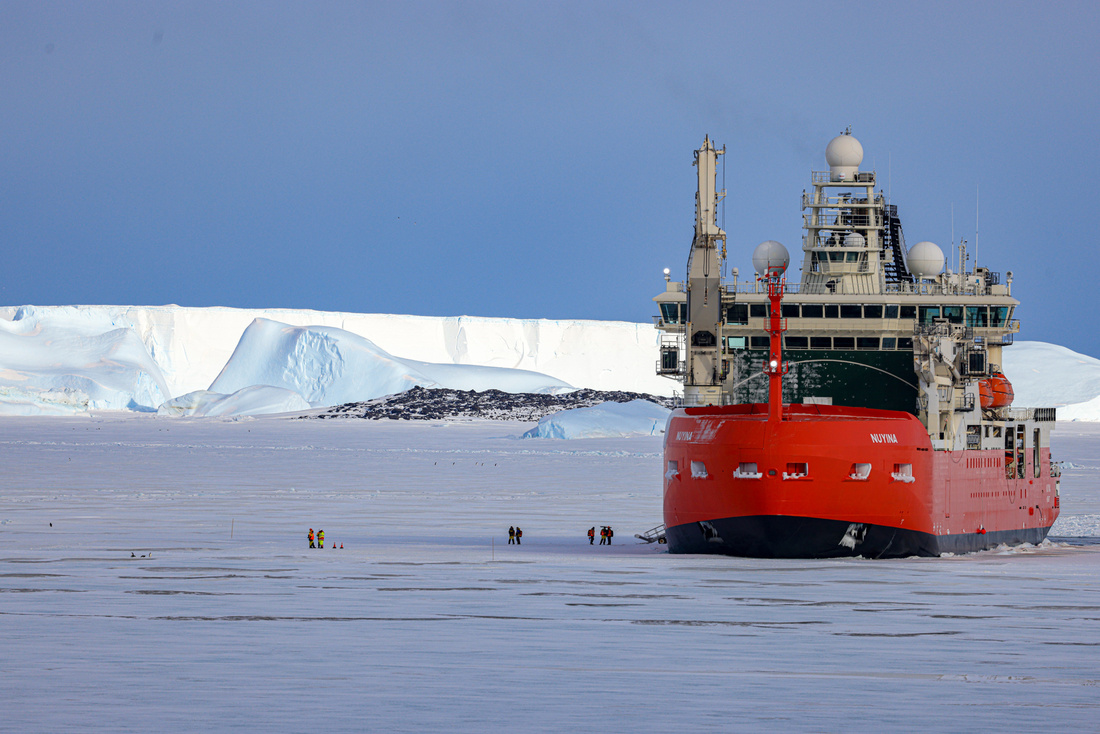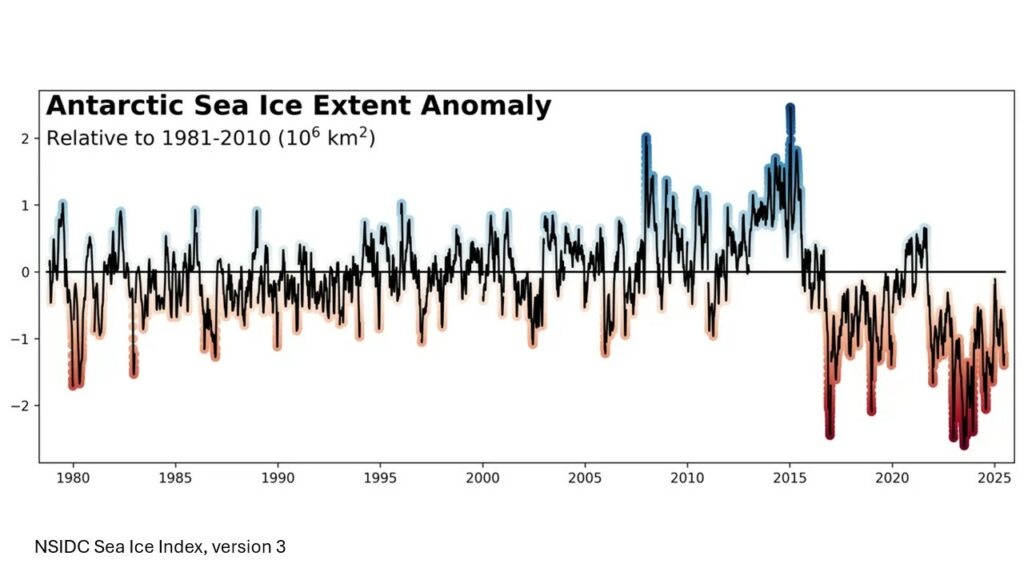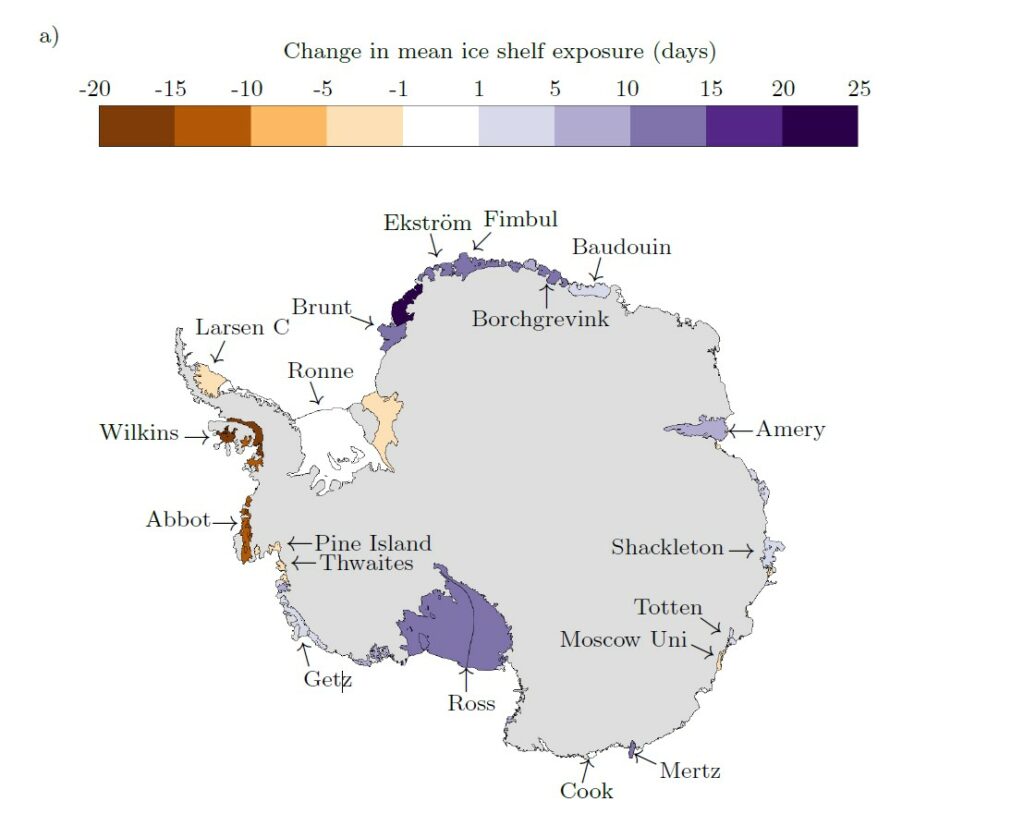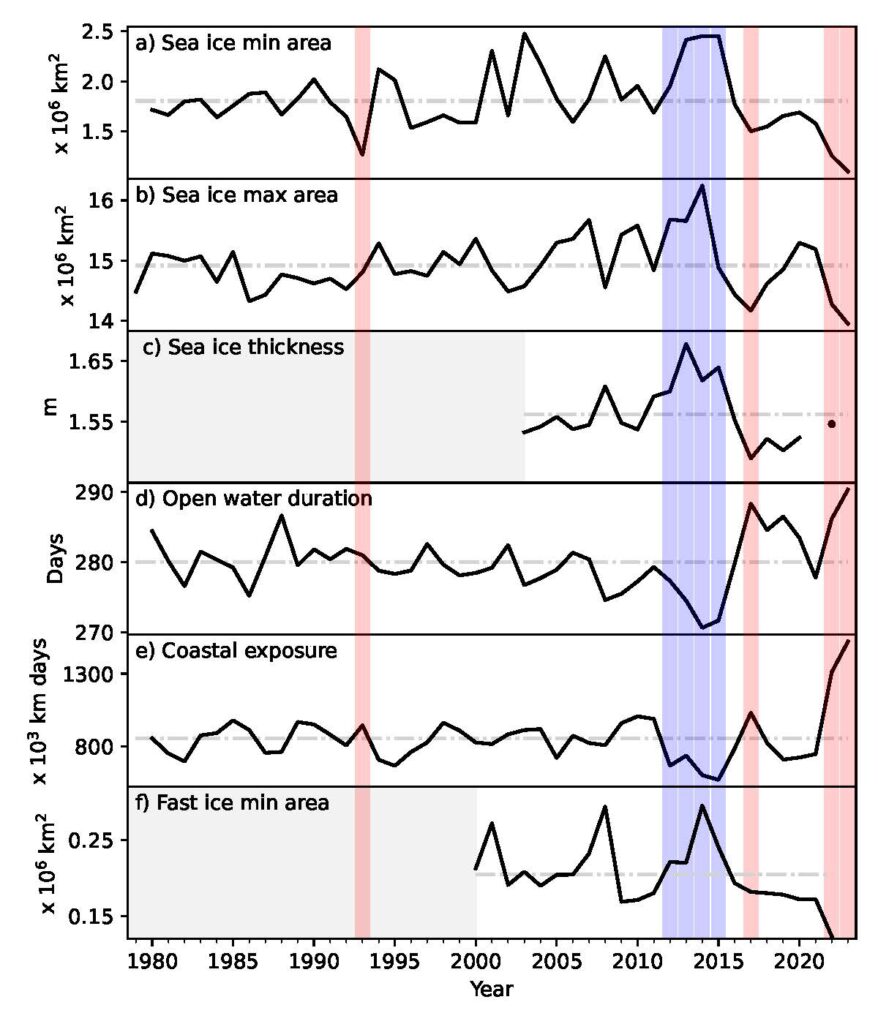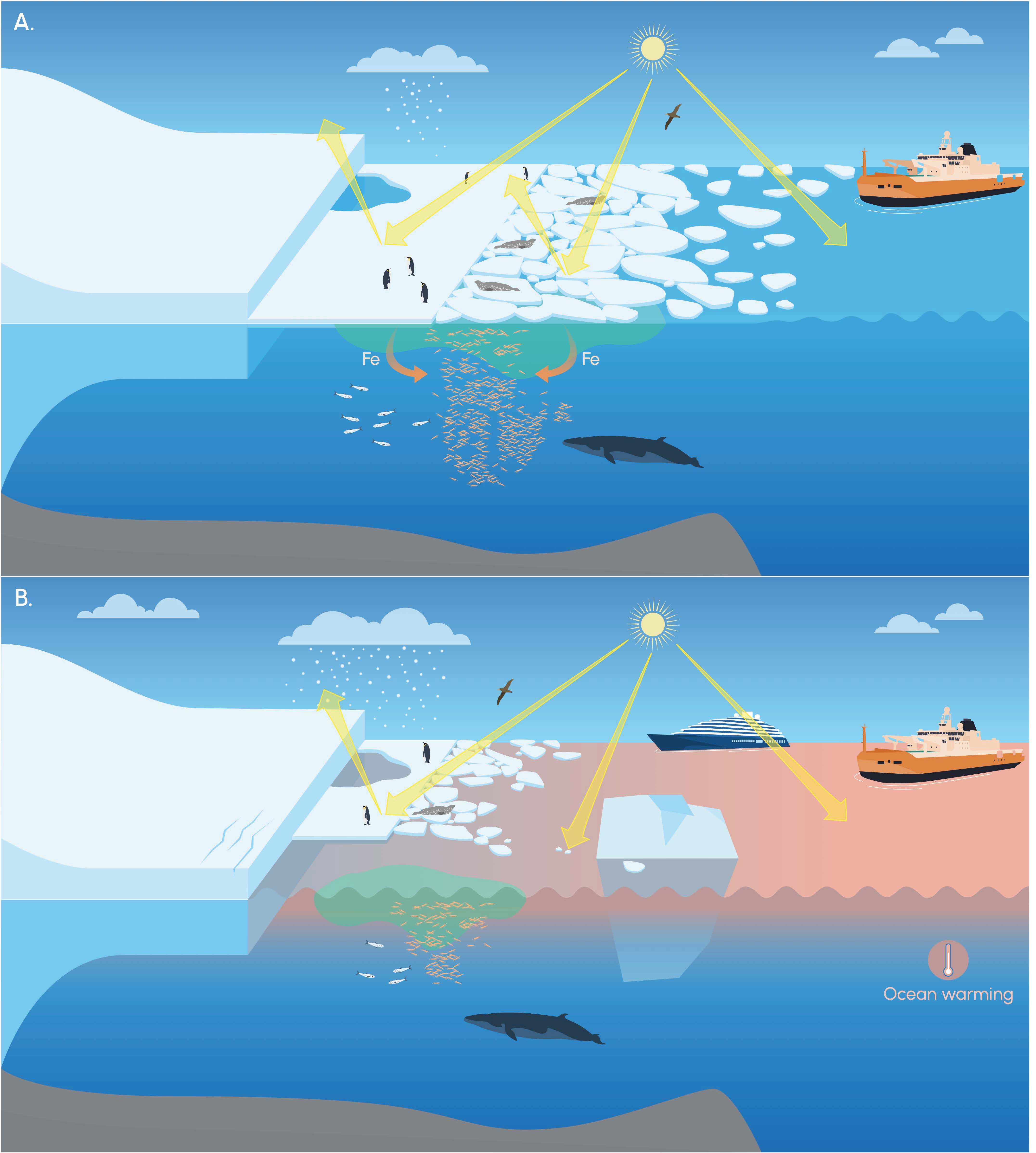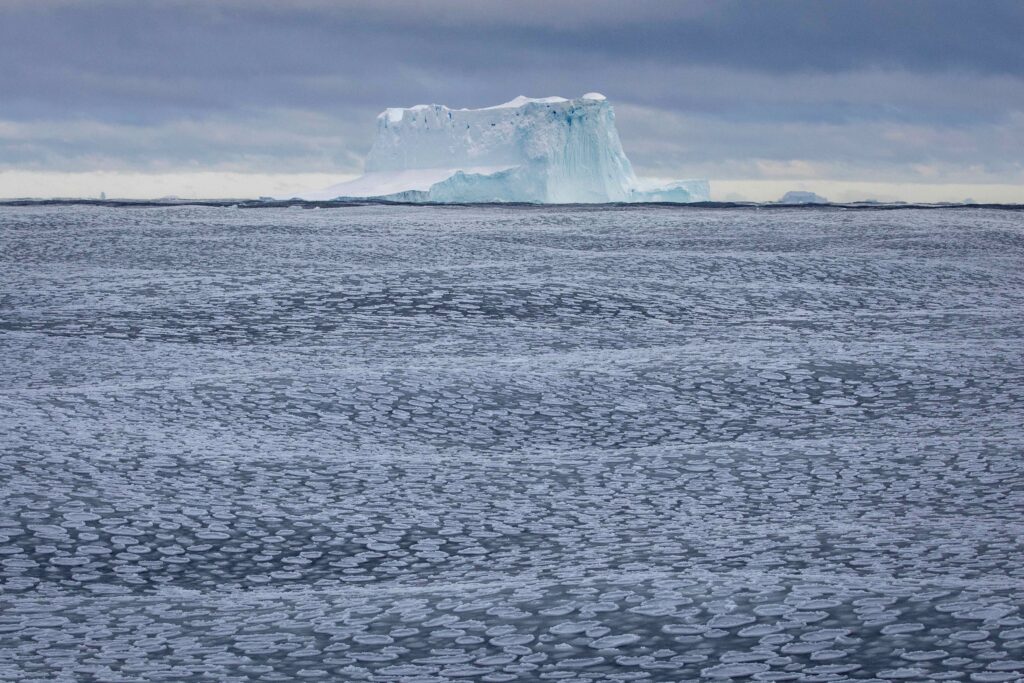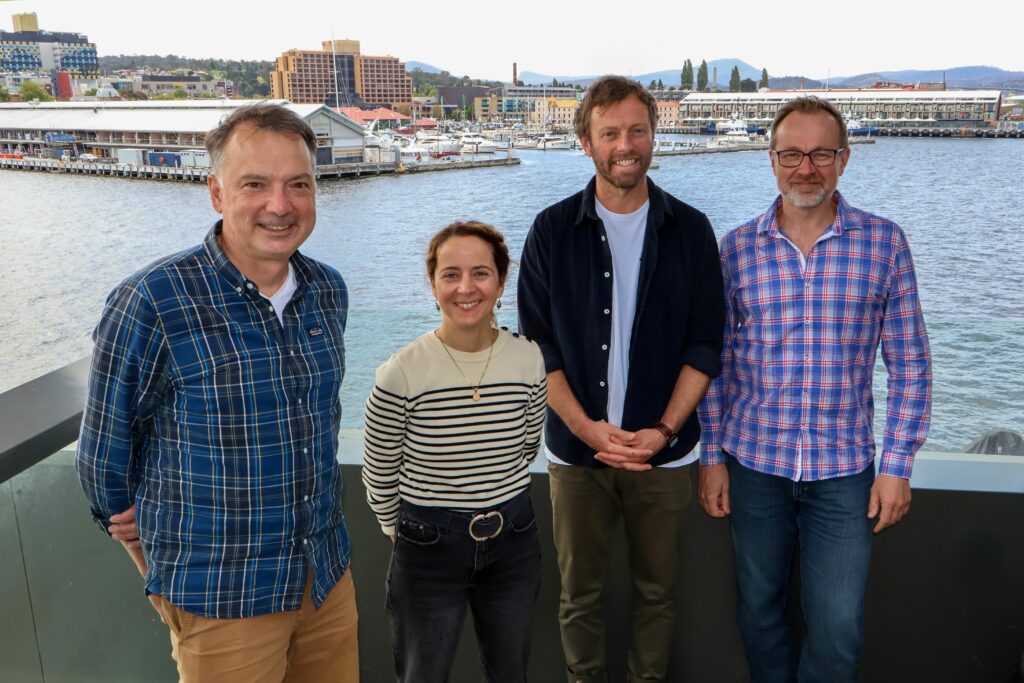Antarctic summer sea ice: Global impacts of extreme lows
2 July 2025
Recent record summer lows in Antarctic sea ice provide a window into a future warmer climate with more extreme events — but what are the impacts we can expect?
An international team of 25 including oceanographers, biologists, and biogeochemists – mostly from Tasmanian institutions – have synthesised the impacts of Antarctic summer sea-ice extremes on ocean currents, ice shelves, wildlife, and shipping access.
Lead author Dr Edward Doddridge, of the Australian Antarctic Program Partnership at the University of Tasmania (UTAS), said the synthesis in PNAS Nexus brings together current knowledge of the sea-ice system.
“However, while our knowledge of the southern polar region and its ecosystems is increasing, we don’t yet sufficiently understand the baseline system to predict how it will respond to the dramatic changes we’re already observing.”
“Because sea ice is the interface between the atmosphere and ocean, the system is complex and difficult to predict – not to mention difficult for scientists to access to gather information.”
“Impacts of changing sea-ice coverage don’t happen in a straight line and can be compounded by unknown feedback mechanisms,” he said.
The study also highlights several data gaps — the single most critical measurement currently lacking is circumpolar sea-ice thickness.
“Without reliable, year-round, long-term measurements of sea-ice thickness, we are unable to assess the multi-year persistence of sea ice extremes, or identify regions where sea ice is thinning and likely to retreat more rapidly,” the authors wrote.
“With Antarctic sea ice providing climate and ecosystem services on regional and planetary scales, sustained and long-term observations to accurately predict and potentially mitigate the impacts of climate change on this region should be a global scientific priority,” said Dr Doddridge.
He said that while impacts of summer sea-ice loss in Antarctica are wide-ranging across physical, ecological and societal systems, the study identifies three key consequences:
- Coastal exposure
Sea ice acts as a protective barrier. Extreme low sea-ice events lead to warmer Antarctic surface waters and increased exposure of the Antarctic coastline to wave damage. Both impacts have the potential to weaken Antarctic ice shelves that ‘buttress’ the flow of the ice sheet into the ocean, and increase its contribution to global sea level.
“When we lose summer sea ice, we get more icebergs — six extra icebergs for every 100,000 km2 of sea ice we lose,” said Dr Doddridge. “To put it another way, summers with low sea ice produce twice as many icebergs as other summers.” - Ocean warming
Sea-ice loss leads to ocean warming, as solar radiation is absorbed by dark water rather than reflected by bright ice. The subsequent growth of microscopic algae in ice-free surface waters further increases this warming effect by absorbing more sunlight. Extreme lows in summer sea ice also lead to warming that persists for multiple years, raising the possibility that anomalies can build on previous warming with compounding impacts. - Marine ecosystems
Antarctic and Southern Ocean ecosystems are finely tuned to the presence and rhythm of sea ice. This is changing rapidly, with negative impacts on most species. Particularly vulnerable are species that breed or moult on sea ice, such as emperor penguins and seals. Extreme sea-ice lows also adversely impact krill, a foundational prey species that relies on sea ice for nourishment and refuge.
The study also noted that sea-ice extremes could contribute to overall climate anxiety and other mental health symptoms in the general population.
Co-author Dr Amelie Meyer from the Institute for Marine and Antarctic Studies said that heightened exposure of the public to Antarctic sea ice news can be quantified by trends in online searches on the topic.
“Over the past decade Antarctic sea-ice extremes have steadily gained media attention, with a record high number of searches in July 2023 matching the extremely low winter sea-ice extent that year.”
“This increased and repeated exposure of the public to extreme low sea-ice events is an additional stressor that is very likely to fuel climate anxiety and can lead to greater mental health challenges,” she said.
“The cost of climate anxiety is not only the deteriorating mental health of individuals; it can also lead to a disengagement from the issue of climate change, potentially further reducing action to combat climate change,” the study concluded.
Co-author Dr Will Hobbs from the Australian Antarctic Program Partnership at UTAS said this work is the first attempt to bring together the global impacts of Antarctic sea-ice loss.
“But whilst it demonstrates some really alarming consequences, it also highlights some potentially serious effects that scientists don’t yet fully understand.”
“Climate projections indicate that continued greenhouse gas emissions will accelerate the changes in Antarctica and the Southern Ocean that we’re already seeing, and exacerbate the far-reaching negative impacts of sea-ice loss,” Dr Hobbs said.
“With that in mind, our study recommends that a society seeking to preserve Antarctica and the Southern Ocean, and the important ecosystem and climate services the region provides, must prioritise an immediate and sustained transition to net zero greenhouse gas emissions.”
ENJOY OUR MULTIMEDIA FEATURE: A world with less ice
READ THE PAPER: Impacts of Antarctic Summer Sea-Ice Extremes
by Edward Doddridge, Will Hobbs, Matthis Auger, Philip Boyd, Sean Chua, Sue Cook, Stuart Corney, Louise Emmerson, Alex Fraser, Petra Heil, Nat Kelly, Delphine Lannuzel, Xueke Li, Guillaume Liniger, Rob Massom, Amelie Meyer, Phillip Reid, Colin Southwell, Paul Spence, Anton Steketee, Kerrie Swadling, Nathan Teder, Barbara Wienecke, Pat Wongpan and Kaihe Yamazaki
